This website uses cookies so that we can provide you with the best user experience possible. Cookie information is stored in your browser and performs functions such as recognising you when you return to our website and helping our team to understand which sections of the website you find most interesting and useful.
Sunday 31 May 2015, 15:52 | By Andy Malt
Q&A: John Beeler, Asthmatic Kitty
Business Interviews

At the end of March, Sufjan Stevens released his seventh studio album, ‘Carrie & Lowell’. But weeks ahead of the release the album leaked onto file-sharing sites. This is a common occurrence for record labels, of course, but the way in which Stevens’ label Asthmatic Kitty, of which the musician is a co-founder, responded to the leak seemed very unusual.
Under a post on Reddit alerting users to the leak a comment from the label appeared. “Let us know what you think!”, it began. Links to pre-order the album in physical and digital formats were added to, but the label added: “If you can’t afford it – don’t worry about it! Enjoy the music!”
Coming shortly after Björk’s label One Little Indian rush-released her latest album, ‘Vulnicura’, in the wake of a leak, CMU Editor Andy Malt spoke to Asthmatic Kitty’s Label Manager John Beeler about the company’s very different approach to its music becoming available ahead of release.
AM: Is this response to a leak something you’ve done before?
JB: It’s standard operating procedure at Asthmatic Kitty Records. We don’t issue takedowns on leaks or shares. It just doesn’t make sense to us. Why chastise fans of your music? People who are able will find a way to support the music. Besides, we’re too busy doing other things to worry about so called piracy.
We do visit download sites and usually leave a comment pointing people to a purchase point, and thanking them for listening. We have pre-order links up and ready, and we have those up early. We always have plenty of purchase points well before a record comes out. In some ways a leak can even help move things forward, like ticket sales, or building buzz about a record. People are generally good people and they’ll find a way to support music.
AM: Did you discuss other possible options before going this route this time?
JB: Not much discussion really. Keeping it cool and sticking with the plan is generally how we handle leaks.
AM: Another response to leaks, such as with Björk’s latest album, is to rush-release it on iTunes. Why not go down that route?
JB: What I learned from watching Björk’s label One Little Indian is that the story became more about the leak and less about the music.
We’ve surprise released music before – we did that in 2010 with Sufjan’s ‘All Delighted People’. But Sufjan wanted the story here to be about the music, so we opted instead for a ‘regular’ album campaign. Releasing music early would have made the story about the way we released the music, not the music itself. I’m cognizant that even answering these questions in some way reframes this as about the way we’ve handled it, and not about the music.
Thankfully, the music on ‘Carrie & Lowell’ speaks for itself. I can’t speak to what other people will hear when they listen to it, but I hear a remarkable, personal, tender but strong album that will stand the test of time. The leak is a flash in the pan in what will be a long life for this album. There’s no need to respond in a panicked state to something like a leak when you have something as good as this record.
Of course, it’s always easier to judge these things from the outside and I can’t say I wouldn’t have made the same decision in One Little Indian’s shoes. No doubt someone is criticising the way we’ve handled this, and I welcome that. That critique is how we as an industry iterate and evolve and it’s a good process.
AM: Are leaks just a thing to be expected now? Do you take any steps to stop or delay them?
JB: I remember hearing about the Bon Iver album leaking [2011’s ‘Bon Iver’ was briefly released on iTunes a month early – the error was corrected, but the album quickly found its way onto torrent sites]. And a confession: I downloaded that super early leak of Radiohead’s ‘Hail To The Thief’ back in the summer of 2003. Leaks aren’t a new thing, so I can’t believe anyone would be surprised by a leak.
I can’t prove it except anecdotally but I think that less people care about leaks than they used to thanks to Spotify and streaming services. There are so many ways you’ll know you’ll get an album that I don’t think there are as many people downloading early leaks as there used to be. There isn’t really a “Napster” to make it easy anymore.
That said, on this record we did use watermarks, and that probably prevented it from leaking earlier. Do I wish that ‘Carrie & Lowell’ hadn’t leaked? Absolutely. But since it has, I’m happy people are listening to it, and that they get to experience what I’ve been listening to for months.
The downside of a leak, to me, isn’t lost revenue. It’s just less fun. I love it when we all experience something like this record at the same time.
AM: Obviously, with Sufjan as a founder of the label, you have quite a unique relationship with him as an artist. Does that impact on the way that you plan the marketing around new records?
JB: Not really. Sufjan’s role is that of absentee landlord – but in the best way. We can play our music really loud and we don’t have to mow the lawn every week.
AM: In the past you’ve collaborated with other labels on some of Sufjan’s releases, would those partnerships ever impact on your attitude towards leaks or other forms of file-sharing?
JB: It hasn’t so far and I can’t predict a circumstance where a partnership would change our attitude towards leaks or file-sharing. Generally speaking we partner with labels of similar size, and that usually means that none of us have the time to worry too much about leaks. In my experience us smaller labels are too busy trying to sell records.
AM: You said you don’t issue any takedown notices at all. Some labels now do this on an industrial level. Do you think that that’s a bad use of resources?
JB: Occasionally we issues takedowns on YouTube videos that use AKR music where we feel it is inappropriate or for an unapproved commercial or political purpose. Otherwise, yes, I believe takedowns are a poor use of resources for Asthmatic Kitty Records.
Here’s my philosophy on this: There are three possibilities when someone downloads our record from a file-sharing site.
1. They were never going to buy the album in the first place, either because they can’t afford it, or because they simply didn’t like the record.
2. They were going to buy the album, but didn’t because they could get it for free.
3. They got it for free, and they are going to buy the album eventually.
You don’t lose any money that you would have had otherwise with groups #1 and #3. No harm, no foul.
But it’s not a zero sum game with #2. The value of a human being hearing the music and getting excited about it is precisely what all these social media consultants are getting paid to do. You could even say that file-sharing can lead into a guerrilla digital street team. It’s so easy to buy music these days that people will find a way to support an artist, whether it’s a show ticket or an LP purchase or streaming on Spotify or Rdio or whatever.
Besides, music pirates as a group are music fans and it’s in their best interests to sustain music, and I think they do. A study in 2009 showed that music pirates are actually ten times more likely to spend money on music than the average person. Another study from 2012 showed that people who file-share spend 300% more than the average music lover.
All that aside, I think that streaming services like Spotify have decreased file-sharing to the extent where it is no longer a mainstream activity. In my opinion, the money and time spent taking down file-shares could be better spent engaging fans, and upgrading the people in group #2 to group #3. I believe it’s important to approach music with a positive, non-withholding attitude. We don’t need to grovel, but there’s a way to be thankful to have listeners. There is so much ‘stuff’ out there that we’re happy just to release the music and let the business end take care of itself. Sometimes it does, sometimes it doesn’t.
This interview appeared in the April 2015 edition of the CMU Trends Report.
READ MORE ABOUT: Asthmatic Kitty | John Beeler
Friday 29 May 2015, 19:00 | By Ben Osborne
Trends: The cost of recorded music
CMU Trends Labels & Publishers

Ben Osborne reports on Scotland’s Wide Days conference, and a session exploring the costs of releasing an album in 2015.
Scotland’s Wide Days conference began as an occasional evening session a decade ago. The offspring of an irreverent club night, it’s intention then, as now, was to bring leading music industry figures to Edinburgh to impart their knowledge to Scotland-based musicians, labels, promoters, venues and anyone with an interest in music.
Topics discussed at this year’s convention included a session looking at the Brazilianisation of the music industry, where the dominance of the top 1% is squeezing the “musical middle class” out of existence, and a debate on whether Scotland needs an export office which also deconstructed the creative economy. But despite the weight of the topics under discussion, it was a refreshingly irreverent, entertaining and youthful event, geared as much towards helping aspiring artists as established pros.
The session that particularly caught our eye put the spotlight on the costs of creating recorded music in 2015, looking at what kind of investment is required to put out a debut album in 2015 from the perspective of a self-releasing artist, an independent label and a major.
THE SELF-RELEASING ARTIST
The session began with Lorraine McCauley, whose band The Borderlands self-released their debut LP in 2012. The band were inspired to make the record after recording an initial EP and taking it to a distributor, who, “loved it and said why don’t you make an album?”
McCauley admitted that band members were living on a shoestring at the time, but were motivated to put out a full album and so pooled their resources.
As you’d expect from any self-releasing artist, the project required the band to provide a lot of time without payment, and to call in a number of favours along the way. But McCauley tried to account for both the time and in-kind investments, in addition to the actual hard cash that was spent.
“To break down what the commitment looks like, the pre-production stage starts with songwriting”, she began. “It’s hard to cost that out. I’ll think about a song for months before it comes out. But I budgeted for four days work per song and there’s ten songs on the album. So, if you’re on minimum wage that’s about £2000”.
One of the band members provided rehearsal space for pre-production, saving £5599, and another band member worked in a recording studio. “We were the lucky that one of the perks of his job was that he could record his own projects when the studio was closed. So that meant he was the producer of the album, as well as being on it”.
Though because they could only use the studio when it wasn’t being hired out to paying acts the band “recorded in the middle of night. Or we would get up at five in the morning and go in before work. We did that on and off for a year and we all aged a lot – but we got it done”. All in all, McCauley reckons that the total recording costs came to £12,449 of in-kind payments.
But there were, of course, other administrative tasks to be done. Having worked as a project manager, McCauley took on these management duties herself, which included coordinating the band for rehearsals and recording, organising the promotional campaign, and registering songs and recordings with collecting societies PRS and PPL. All of which came to about £5000 at minimum wage rates.
Beyond the in-kind investment, there were, of course, actual financial costs for things like mastering, CD pressing and a three month promotional campaign. “We didn’t have the cash to pay for this, so we set up a Pledge Music campaign which raised £2500”, McCauley explained. “Though we had to pay Pledge 15% of that, which meant we ended up short. So we put in some money ourselves, which we recouped from sales of the CD”.
The band also spent £1200 on making a video, a considerable expenditure that differed little (as we shall see) from the per-video costs that occur with the independent label model. Most of the things needed for the video were actually provided by the band for free but, McCauley explains: “The money was spent on props and the video makers. Everything else we borrowed or collaborated on. The clothes were our own and we got hair and make up from volunteers”.
Finishing off the maths, McCauley reckons that “if we were to put the total costs together it comes to about £26,000. That means each track cost about £2600. And based on album sales to date, if we’re counting our in-kind costs, we have so far lost about £16,000”.
Luckily McCauley’s second album has been given funding by Creative Scotland which should help next time around.
But given the personal investment on LP number one, it’s not surprising most artists would still prefer to release their music with a record label; a recent IFPI/Unsigned Guide survey found that 70% of unsigned UK artists still wanted a record deal.
THE INDEPENDENT LABEL RELEASE
Music industry veteran Alex Knight of Brighton’s FatCat was up next discussing his budget for a debut album campaign. “I start from how many albums I think we can sell”, he explained. “Taking into consideration who the artist is, what they’ve done already, and what I consider to be pessimistic sales projections”.
For the band in his case study, Knight calculated potential sales of 6000 units in total. Based on that he considered how many physical units the label should manufacture and what that would cost. Working out at £10,000, this was a considerable start. “Pressing CD and vinyl is not cheap”, he noted. “The reason being that you have to have value in your product. Coloured vinyl, or a gatefold, is not a pound a time. It’s £2-3 a unit. But it gives you value”.
The label also contributes pre-production costs, including the artist’s advance, which even for small indies can be considerable. Then there are recording costs, which in this case came to £10,000, not including additional artwork and mastering expenditure.
And with the finished product ready, there are still further costs that are required to start generating sales, including creating videos, photos and press materials. For this release FatCat funded three videos at £1500 each.
“You need to create videos for your acts”, Knight said. “Plus photos, and have teams for online PR, print PR, international PR in France, Germany etc. And we have to have a radio plugger, at £1500 per single, to get tracks taken to radio”.
FatCat is also hands-on when it comes to tour support, helping fund the costs of gigging because “bands need to tour to promote sales”. Other costs include distribution charges, mechanical royalties paid to the band’s publisher, producer fees and royalties, and providing incentives to retailers, something FatCat – which began life as a record store in Covent Garden – understands well.
“Retailers need incentives and quite often, if you want to put a significant amount of units into a store, they may ask for a format that is exclusive to them”. For example Rough Trade asked FatCat to create a unique clear vinyl Honeyblood twelve-inch, which was available exclusively in the retailer’s stores.
Back to the maths, Knight concluded: “My pessimistic sales projections come to £50,000 but my costs are £101,000, or £8687 per track”. And that doesn’t include the additional cost of £28,000 for the US office’s campaign. Which might pose the question, why would a record company invest in a new artist in this way.
But the label is banking of future opportunities, of course. “If you’re starting with a debut band you don’t know what the sales are, so you start low. And you may need to invest more heavily than on a second or third album. With a debut record you’re trying to get the act’s head above the parapet, so you get key press, key radio and get the band established on the live circuit. Hopefully on the initial album tour they get to a position where they can sustain themselves touring in the UK, Europe and the USA”.
So if the debut LP campaign is successful, some of the costs disappear when you move onto the second and third LPs. And of course there are other income streams that can pay a label’s initial investment back in one swoop. “One or two sync deals in the US or UK can radically change how much of a revenue stream is coming in. That won’t change the cost per track, but it will significantly change the money coming in”. Still, it remains a risky business, for artist and label.
THE MAJOR LABEL RELEASE
Lester Dales, of Dales Evans Chartered Accountants, has gained a thorough knowledge of the workings of major record labels, having worked for both labels and artists signed to majors – although the majority of his clients are on the artist side. “Major label costs are grouped into four broad areas: A&R, marketing and advertising, in-house costs and variable costs”, he explains. For majors, A&R covers what we’ve listed as pre-production and recording costs above.
Like independent labels, before a major signs an album deal they’ll consider targets and the level of income they hope to generate, based on the artist, genre and other variables. The wider company’s market share, global reach and better access to cash flow might make the major more optimistic about the potential of a new artist than an indie working could be with the same act.
Lester’s case study focused on a fairly large signing, with an advance of £150,000. “A lot of people would be very happy to receive an advance of that size, but typically an artist signing to a major will have a manager, who they pay 20%, plus there are legal fees, accounting fees and, remember, the band will want to take a wage. I’ve based my figures on an eighteen month album cycle. So if there’s four members of the band they’re going to get £15,000 to £18,000 a year each”.
Major labels will usually provide tour support too, recognising the promotional value of gigs, and can usually afford to make a bigger contribution than indies. In his example, Dales put £85,000 in the budget – but cautioned that this money “doesn’t come free. The artist has to repay it through artist royalties, and these days labels will often expect a percentage of touring profits, merchandise sales and website profits too, to reduce their risk”.
Other label expenses during the launch album campaign include £45,000 for three videos. And as for the recording of the record itself, “I put in a healthy recording budget of £100,000 that will cover recording, demoing, mastering and producer’s fees”. In all, the total cost of the A&R stage comes to £390,000. All of which the label hopes to recoup from artist royalties linked to digital and physical album sales – apart from the video budget, which will often be recouped 50% through artist royalties and 50% through any income that the video itself generates.
Then there are marketing and advertising costs, which include photo shoots and any costs associated with media appearances, such as paying for crew, accommodation, equipment hire, make-up and so on. It can also include trips abroad, so costs per trip can be anywhere between £500 to £2500.
Other promotional costs include PR, radio plugging, social media and advertising. A lot of these services tend to be done in-house at the majors; some of the bigger labels do continue to use agencies for marketing and PR work, but they use their in-house teams more and more to make savings. Marketing costs can vary hugely – particularly depending on what kind of advertising is bought – but either way, they will usually be significant for a major label campaign.
The third strand of expenses relate to other in-house costs, such as the sync marketing team, who work in “an area of income that everyone hopes they can benefit from. With a major label, because of the international set-up, a UK act can benefit from sync teams in New York and LA who are in front of the people using music in TV and film”.
Some majors have their own in-house distribution divisions, which can bring costs down considerably, though these savings “don’t always wash down to the share of income the artist derives from the record”, Lester noted. But nevertheless, when it comes to overall costs, getting recordings to market is often “considerably cheaper for a major than an independent which, in certain territories, will often have to work with a distributor owned by a major”.
CD manufacturing, as a percentage of the retail price, is usually cheaper for a major than either self-releasing artist or independent labels because of economies of scale and buying power. “I see costs of 70p to £1 [per unit]. Major labels will always try to keep the cost of production down and minimise the number of inserts and cost of packaging, to further control expenditure”.
Nevertheless, assuming an initial run of 30,000 CDs, the cost to the major of prepping, releasing and marketing a debut LP is a massive £530,380. “It’s in a different league to the other two”, Dales observed, comparing his figures to those of McCauley and Knight. “But you’re looking at a worldwide release, with a back-room commitment from a large organisation with staff working on hundreds of releases. In a way they’re feeding a machine and their expectations are high because they’re investing more money”.
As noted with the independent release, the costs are often higher on a debut LP because the marketing challenge is greater and all important touring activity won’t yet be self-sufficient. But Dales noted a flipside. If a debut record does exceedingly well, the artist expects to go into bigger and better studios and spend more time on a record. And they expect to go into more territories. So a major label’s costs can also go up on a second release. “If you chose to concentrate on getting into the US, it can suck an awful lot of the money out very quickly”.
“By the second album the label are going to be looking to spend less on tour support,” says Dales. “But they may be happy to commit more to marketing. If the project does take off, the benefit of being on a major label is they immediately have the money to grow an artist’s career. The other side is that if the first LP does not meet expectations, you may never get to make the second record. I’ve been in situations where an artist has renegotiated their advance down to stay with a label. But generally speaking, the harsh fact is you may well get dropped”.
NEW CHALLENGES
It’s no secret that the biggest challenge for everyone releasing recorded music today is dealing with the shift from physical and digital, and more so from downloads to streams. While for a time it looked like the download market would be singles rather than albums driven, in the end digital album sales became big business, which meant labels that had always assessed their risks on debut albums based on the projected cost and sales of second and third LPs, could still plan according to the same set of assumptions as in the CD age.
But as we shift to streaming, the returns from an album will change because – even if you are optimistic and assume ad-funded and subscription based streaming services will eventually deliver revenues on par with CDs and downloads – those revenues will inevitably come in over a much longer period of time, rather than predominantly in the months that immediately follow release. And while the streaming market is still maturing, it’s harder for labels to predict what income they can expect and when.
But with streaming starting to outperform downloads in some markets, and likely to become a key and then the key recorded music revenue stream, artists and labels will need to adapt their projections. Though, for the foreseeable future, it seems likely the costs of releasing a debut album will remain significant and inline with current budgets.
READ MORE ABOUT: Alex Knight | Lester Dales | Lorraine McCauley | Wide Days
Friday 29 May 2015, 18:19 | By Chris Carey
Trends: Five things you should know about UK consumers
Brands & Merch CMU Trends Labels & Publishers Live Business The Great Escape 2015
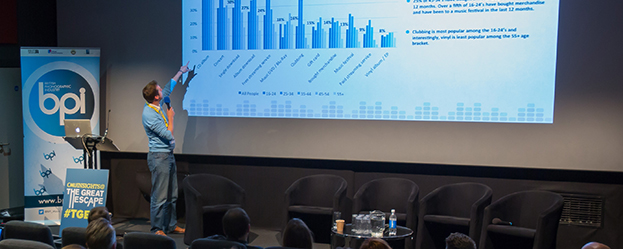
During the CMU Insights strand ‘What’s The Point Of A Record Label Anyway?’ at The Great Escape this month, Chris Carey, CEO of music research agency Media Insight Consulting, summarised the findings of his company’s recent survey of UK consumers which set out to discover how people engage with both recorded and live music, and music-based merchandise.
More than 2500 respondents were surveyed and from their answers MIC recently published its UK Music Consumer Insight Report. After his keynote at CMU@TGE, we asked Carey to pull out the five key messages he thinks the music business needs to hear
1. UK consumers are passionate about music
One of the biggest challenges that all of us in the music business experience today is the notion that music should be free. The notion stems from the digital piracy of music at the turn of the millennium. This is usually based on the fact that piracy made music free, rather than being based on any understanding of whether consumers value music. If consumers value music, music has a value and therefore should not necessarily be free.
People are willing to pay £3 for a cup of coffee from Starbucks; £9 for a fancy glass of wine; £80 a month for a Sky TV subscription, which gives an incomplete offering and still makes you watch adverts, often within the programme itself. But £10 for all the music in the world, on demand, on your phone, PC, tablet, ad-free, is considered far too expensive.
When you look at our consumer research in the UK, 30% of the population either agree or strongly agree that music is their number one passion. When you talk to people aged 16-24 that number grows to 44%. And of those 35-44 – who we often consider too old to be interested – 36% agree! There is a passion for music that transcends age. A key challenge for the UK music industry is harnessing that passion and transforming it into income, so the industry can invest in making more music.
2. When it comes to music listening, radio still matters
When you ask people about how they listen to music, traditional radio is still the most popular way people engage. 68% of people in the UK have listened to the radio in the last six months.
While traditional radio is the most popular way to listen to music, there is an expected skew towards the older age brackets. On the flipside, 76% of 16-24s listen to music on video sites. Music on video sites was the third most popular way of listening to music (53%) and music on CD/vinyl was second with 62% of the UK listening this way.
Traditional radio listening is buoyed by the role radio plays in the car. As new cars offer greater variety (USB plug ins, aux channels and 3G/wifi enabled services) it will be interesting to see whether radio can keep its grip on the market. For now, traditional radio remains a crucial way of listening to music and a valuable way to engage with the mass market consumers, in a consistent way.
3. Music discovery. There is more to life than playlists, but they really help!
When you look at the UK population, traditional media – radio and TV – still rules the roost when it comes to music discovery. However, the youngest age groups are much more tech savvy and are discovering new music through the internet, music apps and streaming playlists.
73% of 16-24s discover new music on the internet, 42% discover on music apps and 35% through streaming playlists. These numbers are far higher than the UK average, demonstrating how youth music consumption in the UK is an increasingly digital culture.
4. People still buy music. And people still buy CDs!
Another common misconception about music is that CDs are obsolete. Globally, 46% of recorded music revenue comes from physical product. We could quickly argue that it is countries without strong internet penetration or tech adoption that is driving this trend, but Japan and Germany are some of the leading physical markets, with only 17% and 22% coming from digital respectively. (according IFPI figures).
When we look at the UK picture, 58% of the UK population bought a CD in the last twelve months! Importantly, there are almost twice as many people buying CDs as there are buying tickets for gigs and concerts. When you look at the demographics, it is that older generation still purchasing CDs, with young people preferring downloads and streaming.
But depending on the composition of your fan base, there can be a lot of money to be made by serving the older generation with the physical product they are still inclined to purchase.
5. People buy merchandise at gigs more than anywhere else
As music sales decline and audiences migrate from downloads to streaming, some in the music business have emphasised an importance on revenue streams such as from merchandise above the sale of music. It’s therefore vital to give music business decision makers an insight into the types of merchandise that get sold, who buys the different offerings, which genres of music are best for which type of merchandise, and which outlets are most popular.
30% of UK consumers have purchased merchandise in the last twelve months. Compare this over the same period to 58% of consumers who have brought a CD and it’s clear which revenue stream the average UK consumer is more likely to engage with. Now let’s be clear, we are not saying don’t sell merch, it’s important to maximise revenue from core fans and merch can be one way to do this, but we think that keeping the focus on selling music is essential ahead of the distraction of other revenue streams.
‘At the gig’ is the most popular merchandise outlet in the UK with 35% of merchandise buyers engaging this way. This is perhaps not too much of a surprise when one considers that at the gig is often the only time that fans come into contact with merch buying opportunities. The music business at large really could do more than it already is to work with promoters and get ‘merch plus ticket’ bundles on the table for fans.
There is a noticeable gender split, with females much preferring ‘at the gig’ and males much preferring high street shops. Again we have to wonder if there is a lost opportunity being uncovered with this understanding of the statistics. High street stores, and independent music retailers in particular, are looking for additional revenue streams and are the experts at point of sale marketing. Is the music business missing a revenue opportunity by not working more closely on merch with bricks and mortar retailers?
READ MORE ABOUT: Media Insight Consulting
Friday 29 May 2015, 17:10 | By Chris Cooke
Trends: Tackling the Digital Pie Debate
CMU Trends Digital Labels & Publishers Legal The Great Escape 2015
While Spotify took the brunt of Thom Yorke’s now legendary verbal assault on the streaming music platforms and the royalties they pay, since then the debate around streaming monies has shifted.
It has become more inward looking within the music community, with the focus being slightly less on how much Spotify et al are paying into the music industry, and more on what is happening to that money once it has been paid over. We call this the Digital Pie Debate, and it was one of the liveliest parts of CMU Insights @ The Great Escape this year.
There are, of course, multiple stakeholders within the music industry who ultimately share in the streaming money. For starters, there are the different copyrights that a streaming service exploits, ie the copyright in the song and the copyright in the recording, represented by the music publishing sector and the record industry respectively. And then there is the split between the creator and the corporate rights owner, the songwriter and the publisher, and the featured artist (and any session musicians) and the record company.
As each new digital business model has evolved, the start-ups developing these services have usually started by talking to the labels, who generally control the copyright in sound recordings, and who – unless you have a user-upload business model like YouTube – the start-up relies on to actually provide the content.
Deals with the music publishers come next, though not always before the service goes live, much to the annoyance of the music publishing community. Moreover, because the independent publishers generally licence digital services via their collecting societies, even once these deals are in place, there is often a middleman between the digital service provider and the actual publisher. But at least a relationship exists, even if it’s once removed.
It’s only after these deals are in place – and the service is live – that digital service providers (DSPs) usually start trying to speak directly to artists. Digital services don’t usually need this relationship to access content or pay royalties, because that is done via the labels. But they might want or need artist relationships to secure exclusive content or marketing partnerships, or simply as a PR initiative to prevent there being any tricky ‘Yorke Moments’, when the DSP is suddenly positioned as the bad guy by a Twitter happy popstar.
The songwriters who are not also featured artists always come last. Indeed, few DSPs have as yet reached out to this community at all. Spotify – a leader on the artist relationships front – is now engaging with the Fair Trade Music initiative, a new organisation set up by the songwriter community to try and secure direct relationships with the digital platforms. Those who write the songs are paid, of course, by their publishers and/or collecting societies, but will likely feel most disconnected from the new music providers.
This timeline is relevant when it comes to the digital pie debate, because many feel that the earlier on the DSP engages with a stakeholder, the more favourably they are likely to be treated. So as streaming continues to boom, concerns about royalty payments seem greater as you work your way through the list: labels, publishers, artists, songwriters.
But what are the key elements of the Digital Pie Debate? Well, after that lively discussion at CMU@TGE this month, we summarise the three key talking points.
THE DIGITAL SECTOR V MUSIC INDUSTRY SPLIT
Although we began by setting the Digital Pie Debate apart from this discussion, it is worth giving a few moments of consideration to this split.
We know that, in the main, the Spotify-style streaming services are keeping about 30% of their revenues, paying over the other 70% to the music rights industry. This is very much an approximate figure, and in the early days a streaming service will likely be paying more to the labels and publishers than it’s total revenues, as it pays out minimum guarantees and advances before the revenue share element of its deals kick in. But in the main, the 70/30 split is the arrangement.
There are some in the music community who reckon that the streaming services, being so reliant on songs and recordings, should actually pay more than 70% of their revenues over to the music rights owners.
In the main, the DSPs are resistant to this proposal. And a report published earlier this year by the UK’s Entertainment Retailer’s Association, which counts the key digital firms among its membership, contained the quote: “70% is tough enough, but at 80%, we would have to shut up shop. Somebody should explain that 80% of nothing is… nothing”.
That said, since Jay-Z led the acquisition of Tidal, he has indicated that his streaming platform plans to pay 75% of its income to the rights owners, so perhaps there is some room for manoeuvre. Though as Spotify and Deezer start to expand their consumer offer to include speech and video content, and programming commissioned by the DSP themselves, it could be that down the line the streaming firms actually seek to push the split the other way.
THE SONGS V RECORDINGS SPLIT
Within the music community itself the increasingly big debate centres on how streaming money is split between those who control the recording rights and those who control the song rights.
Of course, most of the deals done between labels, publishers and collecting societies and the streaming platforms are secret, but we know in the main that the labels are taking 55-60% of the DSP’s revenues, while the publisher is taking 10-15%. Which means the label could be earning six times what the publisher gets.
This disparity is not new. Indeed in the CD domain the label/publisher split would be tipped even more to the former’s advantage. There are various reasons for this.
A sound recording copyright owner only earns from their one specific recording of a song, while the publisher earns on every version and variation of the work. The owner of the song also earns every time it is performed live, and so also enjoys a cut of the live sector’s income. Plus a sound recording copyright term lasts for a fixed time after release (seventy years), whereas the song term runs for 70 years after the songwriter’s death, which could mean a term twice as long in total.
But most importantly the sound recording owner – ie the label – does a lot more work in getting the CD to market. It pays for the recording to be made, for CDs to be pressed and distributed, and for the marketing campaign that will, if successful, result in sales. The publisher, while paying an advance to the songwriter, has none of this risk, and with risk comes reward. Which is principally why the label earned so much more from record sales than the publisher.
When it comes to other uses of music – such as the broadcast or public performance of sound recordings – in the main both rights owners receive more or less the same sum of money from licensees (if anything, the publisher likely sees slightly more). Arguably again it’s the labels that get the content to the radio station or club DJ, but they take a much smaller risk and so the rewards are shared out more equally.
Now, it could be argued that while iTunes was the digital evolution of the record shop, Spotify is actually the digital evolution of radio, and so perhaps a label/publisher split more akin to public performance would be fairer. And a few brave souls on the publishing side of the equation, mainly off the record, have mooted a 50/50 arrangement for streaming income.
But few on the songs side of the fence would actually go that far, while most labels will tell you a 50/50 arrangement would put them out of business. Because whether Spotify is the new radio or not, labels are still taking considerable risks every time they send an artist into the studio.
And while digital may be considerably cheaper than pressing and distributing CDs, there is still an administration cost to distributing content, and marketing costs, if anything, are higher. Labels have also had to invest in systems to pump their content into the DSPs, and have spent heavily digitally ingesting their catalogues.
So 50/50 isn’t an option. But, is the label’s risk really as high in the digital age as it was in physical? And won’t risks decline further as digital-only releases become the norm and the initial set-up costs of the shift to digital are paid off? And aren’t many labels now partly securing their investments in new talent by taking a cut of revenue streams beyond the sound recording copyright?
The publishers, in the main, are yet to go public on this issue. Some in the US have said current streaming royalties are too low, but haven’t gone as far as to say the problem is not just what the DSPs are paying, but the fact the lion’s share of the money goes to the label. And the situation in the US is slightly different anyway, given the compulsory licenses and restrictive collective licensing rules that often tie the hands of publishers when negotiating with digital services.
Behind the scenes some publishers are increasingly agitated on this issue, but the official line is more conciliatory. At The Great Escape, Jane Dyball, speaking for both the Music Publishers Association and collecting society MCPS, insisted that publishers shouldn’t obsess too much about what others are getting, and instead focus on securing the best possible deal for the catalogues they represent. She added that labels shouldn’t express an opinion on the publisher’s cut (some possibly have) and copyright law shouldn’t meddle either (in the US it does), but getting into a fight with the record industry would be a distraction, she feared. “Who even said there was a pie to start with?”
But the songwriters are now vocal. They believe the royalties they are receiving from the booming streaming services are unfair and unsustainable. And in the UK the British Academy Of Songwriters, Composers & Authors has put this issue at the heart of its The Day The Music Died campaign which launched earlier this year. BASCA chief Vick Bain also took part in the TGE debate, stressing that this had now become a major and urgent issue for her membership.
Says Bain of the problem: “Without songwriters and composers there is no music industry and it is, therefore, scarcely believable that writers are almost an afterthought when it comes to getting paid for their work from digital sources. It is not an exaggeration to say that unless things change and change soon the incredible legacy and future health of British songwriting is at real and immediate risk. They need better protection and better remuneration and action needs to happen swiftly”.
But what is the solution to the dispute over the recording/song split? In the US there are some legislative changes that will help, but in Europe the issue is more one for the industry itself to tackle.
The problem is exacerbated because the publishers and their collecting societies chose to license the DSPs directly, rather than licensing the labels and letting them provide content to the streaming platforms with all rights covered (in the CD domain, the label not the retailer was the publisher’s licensee).
This was in no small part because publishers, probably rightly, reckoned they’d get paid quicker if they had a direct relationship with the digital firms, rather than relying on the labels to pass on the money. But this means that there is no direct commercial relationship between label and publisher when it comes to digital, leaving the DSP somewhat caught in the middle.
So, there’s no obvious solution for now. Labels likely hope that publishers and songwriters will be placated down the line as streaming revenues boom and even their minority split of the money becomes more lucrative. Though with the wider recorded music market still wobbling, it could take sometime for that to occur, and songwriters worldwide are likely to remain vocal on this issue in the months and years ahead.
THE LABEL V ARTIST SPLIT
While songwriters are increasingly angry with both DSPs and labels, in the main they are yet to hit out at their direct business partners – the publishers and collecting societies – mainly because in publishing the creator/corporate split is usually closer to 50/50, while the performing rights organisations are often not-for-profits (though their admin fees will nevertheless increasingly come under the spotlight).
But in the performer community there is plenty of tension between artists and their corporate partners, the record companies. And while some do continue to criticise the DSPs Thom Yorke style, often grabbing the headlines in the process, many more performers reserve their criticism for the labels when it comes to what slice of the digital pie artists see. This, of course, is not a new debate, because it began with iTunes.
Under traditional record contracts, and especially major label deals, artists would usually assign the copyrights in their recordings to the record company, and in return receive a cut of any revenue their records generated once the label had recouped its original upfront costs. In the main the label would keep the majority of the money on CD sales (routinely 85%), though would likely be more generous on other revenue streams like sync and public performance – what might be called ‘licensing income’ in the contract – where they might agree to a 50/50 split.
In the main, labels have treated digital revenues – both downloads and streams – as if they were CD sales, paying out the 15% split to artists, or maybe a few percent more on digital as compared to physical income. Plenty of artists have cried foul on this practice.
Partly based on the argument that digital revenues are licensing income, and so under heritage contracts the licensing rate of 50% should be paid. And partly based on the same argument as that given by the publishers above: yes the labels continue to be the big risk takers in music, but are their risks really as high as in the CD age?
Of course, with new artists, contracts will clearly state what cuts the label must pay on downloads and streams, and if an artist has signed that contract – the label might argue – what right do they now have to complain? Some managers would accept that argument, conceding that most new acts still need a label’s investment and marketing expertise, and if the deal is a 20% royalty on digital, well that’s the deal new artists may have to reluctantly accept.
Although, as any good lawyer will always ask, “20% of what?” Which brings us to the real bugbear of the management community, the digital deal secrecy that makes it impossible to know what fees the label takes and kickbacks it enjoys before it splits the loot with the artist. Which brings us back to the big fat transparency issue. Whatever slice of the pie the artist receives, has the pie been artificially shrunk before the knife is sharpened?
The need for more transparency comes up time and again at music conferences these days, and CMU@TGE was no different. Will market pressures force the hands of the labels and publishers in this domain? Or will legislation be required to force the corporate rights owners to bring artists and their managers inside the NDAs that surround digital dealing? Expect this issue to be loudly debated in the year ahead.
Though expect one other argument too from the artist community – performer rights. In many countries copyright law provides rights not only for those who own sound recordings, but also for those who performed on them.
The most important performer right is Performer Equitable Remuneration, a rule that says that whenever the ‘performing right’ element of a sound recording copyright is exploited, not only must the copyright owner be rewarded, but so too must the performers. Which is why money paid by traditional broadcasters to record industry collecting society PPL is split 50/50 between the labels and the artists, oblivious of record contract.
Performer ER is not currently paid on streaming income in most countries, including the UK. But remember that argument above, isn’t Spotify just the digital evolution of radio? If radio pays Performer ER, why not Spotify? The problem here is the ambiguity of copyright law, which often provides a get-out for labels on this point. Though that ambiguity is mainly possible because dated copyright legislation rarely defines a ‘stream’, and it’s therefore not clear which rules should apply. Perhaps if copyright law was updated, Performer ER could and should apply to streaming, empowering artists beyond their record contracts.
So to conclude, consider the Digital Pie Debate at this year’s CMU@TGE simply a launchpad. The various strands of this discussion could be occupying The Great Escape stage for several years still to come.
READ MORE ABOUT: British Academy of Songwriters Composers & Authors (BASCA) | Digital Pie Debate | Music Publishers Association (MPA)
Friday 29 May 2015, 17:05 | By Chris Cooke
Trends: What’s the point of a record label anyway?
CMU Trends Labels & Publishers The Great Escape 2015

The team from CMU Insights began the proceedings of each conference strand at The Great Escape this year by reviewing the part of the business under the spotlight. Taking those insights beyond the room, here we present a bullet point summary of the deals intro.
• Ever since the rise of the first direct-to-fan and fan-funding platforms, many journalists have predicted the demise of the record label. Yet artists continue to sign to labels all the time. Why?
• The record company is just one of an artist’s business partners. Traditionally artists would do a separate deal for each of their revenue streams, having separate business relationships for their recordings (label or distributor), songs (publisher), live activity (agent and promoters), merchandise (merchandiser) and so on.
• Generally artists – especially new artists – would expect business partners to work on their behalf for free at the outset, based on the promise of future fees, revenue share and/or copyright ownership.
• But artists – especially new artists – also need someone to cover their costs, and to fund and lead on a big marketing campaign to fully launch the artist and their debut album.
• Artists usually looked to the label to provide all of this. So the label is important for providing money, but that’s not the only thing.
• What the label provides: Money, artist development, content production expertise, distribution (routes to market), marketing (expertise, resource, contacts), rights management and deal-making power, a sounding board, a friend, the occasionally necessary bad guy in the room.
• Most – if not all – of these services can now be secured elsewhere – from direct-to-fan and pre-order platforms, from digital distribution and label services companies, and from other business partners within the industry.
• But label deals are still attractive. So why do they sometimes get a bad reputation?
• Various reasons – investment doesn’t guarantee success, the label may interfere artistically to safeguard its investment, it may just screw up the marketing, the artist and label may just fall out over time, the artist often sees very little recording revenue until the label has made back its initial investment, and artists sometimes resent having signed over the copyright in their early (and possibly best) works to a label.
• But labels will point out that, while they may take control of the sound recording revenue stream, and continue to take the majority of sound recording income even once their investment has been recouped, their investment and the risk they take can launch the artist, unlocking all the other revenue streams, which only have real value as fanbase grows.
• Though, of course, as record sales decline, many labels now want a share of some of those other revenue streams as well.
• But that means that record deals are changing. Is that an opportunity for artists and managers to evolve the partnership, so to have more of the good and less of the bad?
• Time will tell, though the artist/label relationship is definitely in flux and plenty of opportunities are definitely there.
READ MORE ABOUT: Record Companies | Record Deals
Friday 29 May 2015, 16:30 | By Chris Cooke
Trends: How to sell out gracefully – better brand partnerships
Brands & Merch CMU Trends The Great Escape 2015
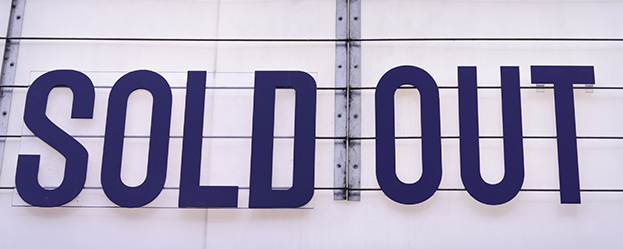
The team from CMU Insights began the proceedings of each conference strand at The Great Escape this year by reviewing the part of the business under the spotlight. Taking those insights beyond the room, here we present a bullet point summary of the brands intro.
• The good news is: brands still like music, and see music as a way to engage consumers.
• The bad news is that many brands are drawn to big name artists with large audiences, though that’s not to say brands don’t also work with newer talent, either because it’s cheaper, or because they seek the ‘coolness’ that comes with new music.
• The cash value of brand deals varies hugely, with the biggest popstars usually seeing the most money.
• Brands might also offer product and exposure as well as, or instead of, cash. Some brands which have used music in their marketing for a number of years may be sitting on big databases of music fans.
• The brand’s key objective will always be to drive more sales of its products or services, and however much a brand claims to be in love with music, that will always be secondary (even if some people working at the brand think otherwise).
• Different brands will be seeking different things from their music partnerships, and it’s important to work out what any one brand is looking for.
• This might include: exposure to an artist’s fanbase, brand endorsement from the artist, association with something ‘cool’, access to tickets for corporate hospitality, access to tickets or content for promotions and deals, access to content to fill a brand’s social media or own music website, access to content for sync, and the opportunity to work in music for a marketing director who is also a music fan.
• One challenge for the music industry is that artists have multiple business partners, each of which control or have a vested interest in a different part of the business.
• If a brand wants content, tickets and artist endorsement, then label, publisher, agent, promoter, management and, of course, the artist, all need to be involved.
• Getting all parties to work together can be a challenge, which is why brands often look to middle-men brand agencies to help them navigate the industry.
• Though as labels, booking agencies, promoters and management firms all look to play this role, they too need to build alliances with other parts of the music business.
• So effective brand partnerships don’t just require a strong partnership between artist and brand, but also between the artist’s various business partners.
READ MORE ABOUT: Brand Partnerships
Friday 29 May 2015, 16:06 | By Chris Cooke
Trends: Music marketing is broken – let’s fix it
CMU Trends Marketing & PR The Great Escape 2015

The team from CMU Insights began the proceedings of each conference strand at The Great Escape this year by reviewing the part of the business under the spotlight. Taking those insights beyond the room, here we present a bullet point summary of the marketing intro.
• Traditionally artist marketing has been led by record companies, and built around album campaigns, which customarily run for the three to four months either side of release.
• While these album campaigns now involve digital and social channels, all the traditional activities remain part of the mix: advertising, mailing lists, music PR, plugging TV and radio etc.
• But increasingly marketing activity is now needed before the label is on board, and then between album campaigns, to build the buzz that makes an artist ‘label ready’ and to keep fanbase engaged between records.
• Most of this marketing takes place through digital and social channels, backed up by gigging, which remains a key fanbase building tool.
• This activity is often led by management rather than the label, with many record companies still prone to be super proactive around album releases, but more hands-off the rest of the time.
• This ‘between-album marketing’ is becoming ever more key as artists seek to grow revenue streams beyond record sales, and especially as they try to capitalise on the potential of direct-to-fan businesses.
• But who pays for this marketing? Do managers need to hire marketing and PR agencies direct, or recruit their own marketing teams? Or can labels be incentivised to take on this work now that they are often cut into other artist revenue streams? Especially if that includes direct-to-fan.
• However, there is another reason for labels to get involved with between album marketing.
• As we shift towards a streaming model, first-week sales are less important, sustained listening is what matters.
• Some of this can be achieved during the album campaign, by getting tracks playlisted, and then encouraging fans to add songs to their own personal libraries on playlists they routinely play.
• But it is likely that additional marketing is needed beyond release to keep albums and tracks in people’s minds, so they repeat listen and additional royalties come in.
• This poses challenges: Can labels afford to provide marketing support beyond the album campaign? Do labels need to restructure their marketing departments, and the way employees are rewarded, to take into account more long-term marketing objectives? Do labels need to change the way they engage marketing and PR agencies? And what is the ‘message’ of the campaign once the actual album release is old news?
READ MORE ABOUT: Music Marketing
Friday 29 May 2015, 15:56 | By Chris Cooke
Trends: Music licensing – explained at last!
CMU Trends Digital Labels & Publishers Legal
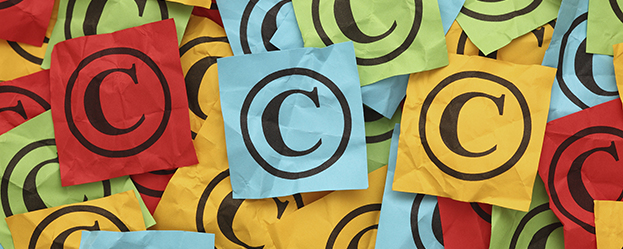
The team from CMU Insights began the proceedings of each conference strand at The Great Escape this year by reviewing the part of the business under the spotlight. Taking those insights beyond the room, here we present in detail the digital licensing presentation.
Whereas iTunes was, in essence, simply a digital version of the record shop experience – meaning the record industry’s relationship with Apple had many parallels to the way it worked with old fashioned CD sellers – the emergence of the ad-funded and subscription-based streaming platforms required a totally different approach from the music rights industry.
And while most streaming services are now licensed according to the same model, not everyone in the wider music community understands how it works (indeed many people working for the labels, publishers and collecting societies which negotiated these deals are still a little confused). But understanding the basics is important as artists, songwriters, labels and publishers review, debate and consider the rapidly growing streaming music market, which could soon be the recorded music sector’s most important revenue stream.
If you were to set up a Spotify-style streaming service today, the first thing to remember is that there is copyright in both songs and recordings, that your business needs to exploit both sets of rights, and that song and recording rights are usually controlled by different players. Labels and artists control the rights in recordings, while publishers and songwriters control the rights in songs. The digital service provider (DSP) needs permission – so licences – from all the rights owners. And it will soon discover that the record and publishing industries have a different approach to licensing.
It’s worth noting that, even with iTunes, this is a key difference between the physical and digital music markets. In the CD domain, the label exploits its own copyright in the sound recording when pressing disks, and it’s the label that gets permission from the publisher to release a recording of its song, usually via the collective licensing system.
So the CD arrives at the record shop ‘rights-ready’, and the retailer doesn’t have to worry too much about copyright, providing it sources its disks from a legitimate supplier. In digital, the DSP is the licensee and it needs permission from both the labels and the publishers, ie the label doesn’t sort out the publishing (there are some exceptions to this, iTunes in the US being the most notable, but generally the DSP must deal with both parties directly).
THE RECORDING RIGHTS
Most DSPs begin with the sound recording rights, because once you have deals in place with the labels they will give you access to the content you need to get going. In the main the record industry licenses streaming services directly, rather than via the collecting societies that provide sound recording licenses to traditional radio stations (so PPL in the UK).
There are some exceptions – mainly digital services which have similarities to radio, which may be licensed through the societies – but most DSPs need to do deals directly with the copyright owners, which means the majors (Universal, Sony and Warner), Merlin (which represents a consortium of indie labels), and then a bunch of independent distributors which represent both labels and self-releasing artists (including Believe, INgrooves, The Orchard, TuneCore and so on).
The record industry’s deals with streaming services are usually – at their core – revenue share arrangements. The label will receive a cut of any advertising and subscription revenue the DSP generates each month, based on how much of the DSP’s overall consumption comes from the label’s repertoire and what revenue share split has been agreed. The actual revenue share splits are usually secret, though are likely between 55-60%, varying from label to label, and DSP to DSP. The assumption is that the bigger the rights owner the bigger the share.
This means that if a DSP brings in £10 million in a month (after VAT) and 10% of all tracks streamed are controlled by Label X, then £1 million of revenue is attributed to that label. If the label has a 55% revenue share arrangement, it would then receive £550,000 of that money. The DSP keeps £450,000, though has only so far covered the recording rights, and must pay royalties to the owners of the publishing rights out of that £450,000, as well as covering all its own costs.
So far so simple. But there are complications.
Most start-up DSPs have minimal revenues at launch, and 55% of nothing is nothing. Knowing this, and not wanting to take on any of the risk generated by the new venture, the label will ask for guaranteed minimum payments, which might include a minimum payment per stream, a minimum payment per subscriber and/or a minimum payment per time period.
Which means that as a streaming service starts to take off in terms of users and streams, it must start paying sizeable sums to the rights owners oblivious of its revenues. The hope, of course, is that revenue share payments soon exceed the minimum guarantees, making this part of the deal irrelevant. This may or may not actually happen.
In addition to the minimum guarantees, the labels will also likely seek an upfront advance, may also charge administration or technical fees, and with start-ups might ask for equity in the business.
The label would justify the advances by saying that some streaming services never actually get off the ground, meaning all the time and resource spent on negotiating the deal and providing the content is wasted. A cash advance on the day the deal is signed overcomes this concern. Though really, well, who doesn’t want the money upfront if they can get it?
As for the equity, rights owners argue that many of the early investors in streaming services bank on making their money back not when the service becomes profitable (which may be many years away), but when the company – if successful in building user-base and hype – is sold, to a web or media giant, or via an IPO. For some start-ups, this first sale may be the single biggest pay-day, and so the labels want a cut of that action. They are minority stakes that will be subsequently watered down as the start-up raises future venture capital, though the labels could still make millions when the big sale occurs.
And that’s your labels deal done. Though you’ll often need a different deal for each territory, and for each iteration of your service, so one for freemium, one for premium, one for the Vodafone bundle, one for the student discount and so on. But each deal will have the same basic components: revenue share, minimum guarantees and an advance. And once done, the labels will pump their content into your servers, and you start reporting usage each month, paying over royalties based on your deal (or deducting royalties owed from the advance paid).
THE PUBLISHING RIGHTS
Technically before going live the DSP needs to sort out the publishing rights too. And here things are more complicated, both at the deal making stage, and beyond.
Music publishers and songwriters have always made a greater use of the collective licensing system than the record industry. There are various reasons for this, but the big reason is that lots of songs are co-written by different songwriters represented by different publishers, which means it’s very common for the copyright in a song to be co-owned by multiple parties. And because in most countries copyrights are not registered, it can be hard to know who has a stake in any one song, let alone what the respective ownership splits might be.
For this reason, whenever a licensee is making use of lots of music it is much easier if they can do so under a blanket license, where they pay a central body a fixed sum of money per play or per song or per month, and that central body then works out what is owed to each publisher and songwriter, ie collective licensing.
In the early days of digital, the publishers licensed most digital services through their collecting societies, as they always had done with radio. However in Europe the bigger publishers have now moved to direct licensing streaming platforms for all but smaller single-territory services, while the other publishers continue to license through their societies.
The big publishers would argue that multi-territory licensing is easier with direct deals, and most DSPs want multi-territory licenses. But it’s also worth noting that collective licensing is always subject to extra regulation, whereas direct deals are not, which means publishers can generally drive a harder bargain when negotiating direct.
That said, direct licensing of streaming services in Europe still involves the collecting societies, which can be confusing, but is necessary because of the way publishing rights are traditionally managed.
Whereas under a classic record contract, the artist assigns the copyrights in their recordings to the record company in their entirety, under a classic publishing contract some elements of the song copyright are assigned to the publisher, but control over other elements (in the UK, the so called ‘performing rights’) is given to the songwriter’s collecting society, with the publisher getting a simple 50% cut of any revenue generated by that component of the copyright.
So whereas the record industry’s collecting societies are in essence just agents for the copyright owners, ie the labels, the publishing sector’s collecting societies are themselves rights owners. And when music is delivered digitally there is both a reproduction of the song (exploiting the ‘mechanical rights’) and a communication of the song (‘exploiting the performing rights’). So, the societies can’t be cut out of the equation when it comes to digital licensing.
The solution to this was for the big five publishers (Sony/ATV, Universal, Warner/Chappell, BMG and Kobalt) to form joint ventures with one of the European collecting societies, and to license digital services via these JV entities. The publisher puts in its elements of the copyright and the society puts in its elements for the same songs, and then the publisher negotiates a deal not altogether unlike the label arrangement outlined above on behalf of both parties (though the revenue share here is more likely to be 10-15%).
The societies then separately negotiate deals with the DSPs for all and any repertoire that they control which are not linked to one of the big five. So to have everything covered (and because it’s hard to know who controls what song copyrights, really you need everything covered), the DSP needs to do deals with the big five via their JV vehicles, and then separate deals with the local collecting society in every country in which it operates.
And if you think that’s complicated, wait until the deals are done. Whereas with the labels, the DSP knows who provided it with each track, and therefore who to pay whenever that track is streamed, because there is no central database of song copyright ownership, the digital service doesn’t know who is due royalties for any one song.
So instead they have to provide every licensor (so in Europe, the big five and each society) with a list of every single stream from the previous month.
The publisher or society then crunches that list, and works out which songs it has a stake in and what stake, and therefore what payment it is due, based on the revenue share and minimum guarantee arrangements described above. Which is quite complex data crunching, and one of the reasons why data is such a big talking point in music publishing just now.
The publishers and societies then invoice the DSP for the money they believe they are owed, and everyone hopes that two publishers don’t both claim to own 60% of the same song (when they do the DSP is ready to block payments and force the societies and publishers involved to fight it out over who really has 60%, and who has just 40%).
There is then one extra layer of complication once the DSP has paid up. What percentage of the money should be attributed to the mechanical right, and what percentage to the performing right? That may have an impact on how the money is paid to the songwriter (so in the UK, mechanical income goes to the publisher who may then pay a royalty to the songwriter, whereas performing right income is paid out by the society to both publisher and songwriter on a 50/50 split).
All in all, while both labels and publishers will make big demands when deal making, the song licensing side is more complicated, and money tends to take longer to work its way through the system.
Which means that songwriters annoyed with their streaming royalties may be responding to money relating to streams that occurred many months ago. And because of the mechanical/performing right split, they may only be looking at half their streaming income.
THE USA
If all of the above has confused you, we should mention that things are frequently different in the US, where compulsory licenses often apply (on sound recordings if the digital service is personalised radio, and across the board on the mechanical rights of songs) and where the publishers have not, as yet, been able to withdraw their digital rights from the collective licensing system, as they have in Europe.
Lobbying efforts are underway in the US to alter some of these rules and, if successful, it remains to be seen whether the American industry replicates what has happened in Europe, or finds a whole new way of doing its digital deals.
This is a free sample CMU Trends article – to get full access to CMU Trends, plus the CMU Digest and discounts on CMU Insights events, GO PREMIUM for just £5 a month
READ MORE ABOUT: Digital Licensing
Friday 29 May 2015, 09:55 | By Chris Cooke
BMI hones in on some key points in its Pandora ruling
Business News Digital Labels & Publishers Legal Top Stories

With the US publishing sector having felt increasingly on the back foot in its battle for higher royalties from the digital services, and especially Pandora, performing rights organisation BMI is understandably still buzzing from its court win against the personalised radio service earlier this month.
As previously reported, in the ruling judge Louis L Stanton backed BMI’s proposal that the royalty rate paid by Pandora for use of the society’s repertoire be increased from the current 1.75% to 2.5% of the digital firm’s gross revenues. Indeed the judge said the proposal was not only “reasonable”, but “at the low end of the range of fees of recent licenses”.
Publishers and songwriters in America argue that their negotiating hand is greatly weakened in the digital domain because of the country’s copyright laws. The big publishers wanted to pull from the collective licensing system for digital, as the big five have already done in Europe, believing that they could secure better deals away from the rate courts that ultimately rule on royalties in collectively licensed arrangements Stateside.
But when they tried to pull, the US courts said that under current collective licensing rules, publishers couldn’t just pull digital rights out of their two main societies – ASCAP and BMI – they were either all in or all out.
The publishers are now busy lobbying to have those rules changed, but in the meantime BMI has secured a better deal through the collective system anyway, though mainly by relying on the pre-emptive deals Pandora did with Sony and Universal when it looked like the majors would pull digital from the PROs.
Having reviewed Stanton’s long judgement in full, BMI yesterday published some of the highlights, noting that the judge clearly stated that, even though the directly negotiated deals were put on hold by the courts, the “direct licenses between Pandora and Sony and Universal for the 2014 calendar year were the best benchmarks because they are the most recent indices of competitive market rates”.
And crucially, those benchmarks could be taken into account by the rate court, something that doesn’t always happen. Pandora had argued that the circumstances of the Sony and Universal deals meant they weren’t reliable guides to market rates. But BMI notes that Stanton rejected that argument.
He wrote: “The predominant motive of Pandora’s management in the publisher negotiations was to retain the publishers’ works in its inventory of songs because of those songs’ importance to its business”. And “once the rate negotiations were freed from the overhanging control of the rate courts, the free-market licenses reflect sharply increased rates”.
Stanton also rejected the argument that Pandora was unfairly treated compared to traditional broadcasters with digital operations, which can use a separate licence negotiated by BMI with the Radio Music License Committee.
BMI also highlights what the judge had to say about that. “[This] is not an appropriate benchmark because Pandora is not radio and is not similarly situated to the other RMLC licensees. On the spectrum extending from terrestrial broadcast radio to streaming on-demand services, Pandora evades neat categorisation”.
The wider American music industry is, of course, fighting battles with Pandora on various fronts, the personalised radio service being licensed via the collective system on the publishing side and under a compulsory licence when it comes to sound recordings.
To date the digital service has seemed to have the upper hand in its legal battles, and it remains to be seen in the Stanton ruling changes that. Though if the publishers successfully alter collective licensing rules and pull from ASCAP and BMI on digital anyway, the importance of this ruling may be less significant long term.
Nevertheless, BMI CEO Michael O’Neill continues to big up the judgement, telling reporters: “This decision is an enormous victory for the more than 650,000 songwriters, composers and publishers that BMI has the privilege to represent. The court resoundingly agreed with BMI, supporting our position that 2.5% was ‘reasonable, and indeed at the low end of the range of fees of recent licenses'”.
He went on: “Given the recent industry deals made in the free market, the court agreed with BMI that this rate is a more appropriate reflection of the value of BMI’s music. This is an important step forward in valuing music in the digital age”.
READ MORE ABOUT: BMI | Pandora
Friday 29 May 2015, 09:54 | By Chris Cooke
BMG signs Jacob Whitesides
Business News Deals Labels & Publishers

The BeeMGees have only gone and signed up “hotly-tipped digital media sensation” Jacob Whitesides, off of the Vines and the YouTubes, in a deal that will see the seventeen year old singer-songwriter from Tennessee head up his own label called Double U Records.
Under the arrangement, Whitesides will be CEO of the Double U venture, supported by his manager and BMG ally Billy Mann (via his Manncom Cree-8-iV Management firm) and backed up globally by the BMG label services business. Double U will release Whitesides’ own musical endeavours and will also seek to work with other talent.
All of this follows Whitesides’ self-released EP ‘A Piece Of Me’ which charted in multiple countries, mainly on the back of his significant social media presence, plus support from Vevo, MTV and VH1. Oh, and there was a sell out European tour. Which is a pretty good start I suppose.
Whitesides, by the way, is honoured by the new deal, not thrilled. So well done him. But first here’s Jon Cohen, EVP of Recorded Music at BMG Chrysalis US, with some words: “Jacob’s songwriting and performing is far beyond his years, but one of the main differentiators for us is what a superb entrepreneur he is”.
Meanwhile the honoured Whitesides says: “It’s such an honour to be partnering with BMG to help me stay true to myself. The only reason I have the option to choose the people I get to do this with is my fans and I couldn’t be more excited about this next chapter”.
Still honoured, we are assured, he continued: “As CEO of my own label my biggest promise is that I will continue to keep as little as possible standing between my fans and me. Everything I do, I do for them, and BMG has given me the freedom to be myself and still give me the muscle and infrastructure I need”.
READ MORE ABOUT: Billy Mann | BMG | Double U Records | Jacob Whitesides
Friday 29 May 2015, 09:53 | By Chris Cooke
Sony renewing contracts with music top men
Business News Deals Industry People Labels & Publishers

Sony Music boss man Doug Morris has inked a new two year deal to run the music major, according to the New York Post’s gossip chiefs, though he’s had to settle for a $17 million a year salary, what with these being challenging times for the record industry and all. Though some profit sharing could get him up to a more reasonable $20 million.
We should quickly note that even the Post included a statement from Sony Music HQ in the US stating that “those numbers are completely untrue and false”. Yes, both untrue and false. And we’re assuming that statement applies to the Post’s other bit of gossip, that over at the Sony/ATV publishing company Marty Bandier was set to extend his contract with the company for a mere $7 million a year.
Though however made-up – or not – those figures may be, it does seem that the Sony music companies will continue to be run by industry veterans Morris and Bandier – both in their 70s – for a while yet, which isn’t necessarily good news for the other high flyers towards the top of the Sony Music and Sony/ATV hierarchies.
But in the context of the wider Sony Corp, music is doing pretty well, so why rock the boat? The Post cites a source as saying: “[Sony] is struggling to fix the electronics business, their movie business was hit by [the hacking] scandal, [so] they feel like they can’t make a change right now on the music side”.
Sony Music predictably says it doesn’t comment on executive contracts, so one of you is going to have to pump Morris for information when he keynotes a Midem next week if we’re going to get to the bottom of this. We’d do it, but you know, stuff.
READ MORE ABOUT: Doug Morris | Martin Bandier | Sony Music
Friday 29 May 2015, 09:52 | By Chris Cooke
Former MTV chief backs PopShack
Business News Digital Industry People Labels & Publishers

PopShack, which we’re calling a YouTube-centric label, but you might see as a music-focused multi-channel network, and which has defined itself as both a “social music company” and “a Generation Z digital music business” (make of that what you will) has announced Bill Roedy, former CEO of MTV Networks International, as a new investor and non-executive director, who will advise on “strategic issues” and “brand and entertainment alliances”.
Confirming his involvement, Roedy told reporters yesterday: “I remember 34 years ago there was a seismic shift in how things were done when MTV launched. It was pioneering and disrupted the system. I see this now with PopShack and the viewing audience who live on YouTube, finding and consuming content in a completely new way”.
He went on: “PopShack is a business that has turned the old methods on their head. It’s about working with and in partnership with an engaged and partnered audience. I’m delighted to be investing in the business and joining the board and look forward to contributing to the tremendous foundation that Conrad and his team have built so far, expanding what is already a compelling proposition to both consumers and brands alike”.
Welcoming his new backer, Conrad Withey, CEO of PopShack, remarked: “I am thrilled and honoured to have Bill investing in PopShack and joining our board. I can’t think of anyone better to help us build PopShack into a global music entertainment network and I look forward to sharing his experience and insights from the early days at MTV as part of that process”.
READ MORE ABOUT: Bill Roedy | PopShack
Friday 29 May 2015, 09:51 | By Andy Malt
Ditto opens second US office in Austin
Business News Labels & Publishers

Digital distribution service Ditto Music has announced the opening of a new US office in Austin, Texas.
CEO Matt Parsons said in a statement: “The opening of Ditto’s Austin office shows how committed we are to the US music industry, especially in Austin where there is such a strong local scene”.
This is the company’s second US office, in addition to one already in operation in Nashville, and alongside other offices in Liverpool, London and Melbourne.
READ MORE ABOUT: Ditto Music
Friday 29 May 2015, 09:50 | By Andy Malt
Charmfactory partners with Sneak Attack in the US
Business News Deals Marketing & PR

UK digital marketing and PR company Charmfactory has announced a partnership with US firm Sneak Attack which will see them pool resources for their clients on either side of the Atlantic.
Charmfactory MD Sarah Thompson said in a statement: “I believe our joint campaigns will maximise exposure for the artists and brands whose campaigns we collaborate on. Combined, we will be a force to be reckoned with”.
Sneak Attack president Marni Wandner added: “We’re very excited to be partnering with Sarah and her amazing team to offer our clients the opportunity for a wider reach, across the US and the UK”.
The two companies will offer social media, digital marketing and online PR services to each others clients.
READ MORE ABOUT: CharmFactory | Sneak Attack
Friday 29 May 2015, 09:49 | By Andy Malt
Rejoice! Shazam now features QR code recognition!
Business News Digital

Shazam has added a whole load of new functionality through visual recognition. And that sounds quite cool doesn’t it? That’s because it is. Mainly because it’s being partly achieved through QR codes – aka the coolest marketing tool ever invented.
Do you remember the time before QR codes? Oh, it was awful, wasn’t it? But then they arrived and revolutionised the world. Now everyone’s forever scanning those little squares with the cameras on their phones and being transported to a magical world of previously unimaginable content. Like that time I was trying to call a company and instead of just typing out the telephone number like in the bad old days, you had to scan a QR code. It was so exciting. So fresh. So new. So… liberating.
It’s amazing it’s taken Shazam so long to come around to the idea of QR codes, really. They are just so great. The company has done boring old audio recognition for years, of course. Tediously identifying music in seconds like anyone and their dog could do. ‘Oh, what’s this new song I couldn’t possibly live without?’ ‘Oh, I’d like to find out more about this thing I’m watching on TV with little to no effort’. Boring.
And so finally Shazam has done something interesting by integrating QR code technology into its apps. It means that you’ll be able to wave your phone camera at posters, packaging, other printed stuff, and in the time it would take to type a few words into a search engine, you can be looking at some cool content that will totally enrich your life in ways you could never imagine.
What sort of content? “Unique mobile experiences”, that’s what. How about some “more impactful engagements”? That do it for you? Oh, and did I mention “custom specialty apps”? So awesome.
“The introduction of visual recognition is another step on our journey to extend the ways people can use Shazam to engage with the world around them”, said Shazam CEO Rich Riley, announcing all this. “For brands, we’re providing a near-frictionless way to engage customers on their mobile devices, with a single tap of a button”.
And there are brands partnering on all this right at launch. Because who wouldn’t wanted to be involved in something that gives customers the opportunity to scan QR codes? (Or special Shazam logos, I should possibly add.) Partners include Disney, Target, HarperCollins, The Wall Street Journal, Evian, and Warner Bros.
Fuck! I am so excited! I’m going to go Shazam me some water.
READ MORE ABOUT: Shazam
Friday 29 May 2015, 09:48 | By Andy Malt
Scottish Album Of The Year Award shortlist announced
Artist News Awards

The nominations for this year’s Scottish Album Of The Year Award were revealed last night.
And before you say, “Oh, another one of those Mercury-style award things” in a slightly mocking tone, it’s worth noting that last year’s winners, Young Fathers, also went on to win the actual Mercury Prize. So, basically, what I’m saying is, one of these acts is going to win the Mercury this year. Could it be Young Fathers two years in a row? The nominations say yes.
Stewart Henderson, chair of organisers the SMIA, said in a statement: “Reducing The SAY Award longlist to a shortlist of ten is never an easy task but by all accounts this year’s process has been particularly painful. We can only wish the remaining titles the very best of luck and congratulate them on emerging from such an extraordinary crop of albums”.
One slot on the list of nominees was voted in by the public, with that position going to Paolo Nutini for his album ‘Casutic Love’. Thankfully the public don’t vote for the overall winner. When will people learn that the public should never be asked for their opinion?
Anyway, each nominated act wins £1000 and a one of a kind quilt from Glasgow School of Art graduate Vanessa Hindshaw. Does the Mercury give out money and quilts to all nominees? No it does not. And the overall winner, announced at ABC in Glasgow on 17 Jun, will receive £20,000 on top of that.
The shortlist is…
Belle and Sebastian – Girls In Peacetime Want To Dance
Errors – Lease Of Life
Happy Meals – Apèro
Honeyblood – Honeyblood
Kathryn Joseph – Bones You Have Thrown Me And Blood I’ve Spilled
Paolo Nutini – Caustic Love
Paws – Youth Culture Forever
Slam – Reverse Proceed
The Amazing Snakeheads – Amphetamine Ballads
Young Fathers – Dead
There’s more info about the whole thing here.
READ MORE ABOUT: SAY Award | Scottish Album Of The Year Award
Friday 29 May 2015, 09:47 | By Andy Malt
CMU’s One Liners: Proper hires, Tyler clarifies, Minaj fans petition, plus more stuff and things
Artist News Awards Business News Industry People Labels & Publishers One Liners Releases

Other notable announcements and developments today…
• Proper Music Distribution has hired Kameil Sattar, formerly with eMusic (yeah, that’s still going), for the role of Head Of Digital. “Exciting” says Sattar.
• Tyler, The Creator wasn’t saying that Odd Future have split up, everyone calm down.
• Nicki Minaj fans recently launched a petition calling for Iggy Azalea’s Billboard Music Award to be revoked. It has gained over 22,500 signatures and rising, even though award organisers have confirmed there’ll be no revocation. Imagine being that angry about someone receiving an award.
• Giorgio Moroder has released a megamix of his new album, ‘Déjà Vu’. Here.
• Hurts have released their new single, ‘Some Kind Of Heaven’. Have a listen here.
• Charlotte OC has released a video for her track, ‘On And On’. Watch here.
• The Weeknd has released the video for new track ‘The Hills’. And here it is.
• Willis Earl Beal will release a new album called ‘Noctunes’. From it, here’s ‘Flying So Low’ and ‘Midnight’.
READ MORE ABOUT: Charlotte OC | Giorgio Moroder | Hurts | Iggy Azalea | Kameil Sattar | Nicki Minaj | Proper Music | The Weeknd | Tyler The Creator | Willis Earl Beal
Friday 29 May 2015, 09:46 | By Andy Malt
CMU Beef Of The Week #257: Neil Young v Coffee (Round 2)
And Finally Artist News Beef Of The Week Brands & Merch Releases
I think if Pono has taught us anything, it’s that Neil Young is not a man to back down, regardless of how impossible the task ahead of him may seem. Because, and I can’t stress this enough, Pono is a big sack of shit.

But with that in mind, I’d like you to cast your mind back to November 2014, when Young got a bit shirty with Starbucks. His beef was that the coffee company had teamed up with genetically modified seed manufacturer Monsanto, behind the veil of lobbying organisation the Grocery Manufacturers Association, to sue the state of Vermont in a bid to try to block a law that would require GM foods to be labelled as such.
Starbucks, we should add, denies that it was part of any such lawsuit, but there are plenty of people, Neil Young included, who say that this is a big fat lie.
Anyway, I was talking about how principled and unwilling to back down on anything Neil Young is. This is one such thing. And, unlike Pono, his stubbornness in this matter is pretty admirable. I mean, last time we spoke about this, Young was just encouraging his fans to sign a petition. This time, he’s announcing the release of an entire concept album based on the whole thing. Amazing.
So, on 29 Jun 2015, it will come to pass that ‘The Monsanto Years’, the new studio album from Neil Young And Promise Of The Real, will hit all good music outlets (and Pono), available in both audio and video form.
Announcing the record, Young said via his website: “Still no lattes for me, folks. I am not going to support a company that actively tries to defeat the will of the people by fighting their right to know what is in the food they eat”.
“Contrary to the misleading information coming from Starbucks, the coffee company is in alliance with other food giants, including Monsanto, in suing the state of Vermont to overturn the GMO labeling laws voted for by the people”, he continued. “An alliance is a pact, coalition or friendship between two or more parties, made in order to advance common goals and to secure common interests. Starbucks and Monsanto are members of the Grocery Manufacturers Alliance”.
He concluded: “The Grocery Manufacturers Alliance sued the state of Vermont to overturn the people’s will to mandate GMO labeling in Vermont. In communications with Starbucks the company was unresponsive to the direct question on whether Starbuck’s coffee product contained GMOs”.
Sometimes I worry that I’m going to stop being angry about stuff as I get older. I quite enjoy being angry about things. It passes the time, you know? Obviously, I hope my anger never leads me to launch something as magnificently stupid as the Pono, but at least Neil Young, at 69 years old, is a beacon of hope that some people don’t just calm the fuck down as they age. He wrote a whole album about something that pissed him off. A whole album!
Let’s celebrate by listening to ‘A Rock Star Bucks A Coffee Shop’ from the album:
READ MORE ABOUT: Monsanto | Neil Young | Pono | Starbucks
Friday 29 May 2015, 09:31 | By Paul Vig
Vigsy’s Club Tip: FabricLive at Fabric
Club Tip CMU Approved

Fabriclive continues to roll on full steam ahead, and tonight sees some big names rise to the occasion.
DJ Hype goes for a two hour set as he headlines Room One with guests The Upbeats and Ivy Lab, who’ll both be sharing their varied takes on dnb alongside Hazard, Pascal, Tyke and Potential Badboy.
Over in Room Two there’s the iconic LTJ Bukem with Utah Jazz, Source Direct, Madcap and Vandera.
South London dubstepper Hatcha will take over our Room Three for the whole night, so expect some phat beats and growling b-lines, though he may go off piste as he’s got five hours to take us on a sonic journey.
Friday 29 May, Fabric, 77a Charterhouse Street, London, EC1M 6HJ, 11pm – 7am, £8-22. More info here.
READ MORE ABOUT: DJ Hype
Thursday 28 May 2015, 09:59 | By Chris Cooke
Posthumous child abuse lawsuit against Michael Jackson dismissed
Artist News Legal Top Stories
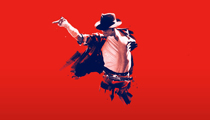
One of the posthumous molestation lawsuits against Michael Jackson has been dismissed because the accuser waited too long to file his litigation.
As previously reported, choreographer Wade Robson sued the Michael Jackson Estate in 2013. He had first met Jackson aged five and spent time at the singer’s homes, including the Neverland ranch, until his early teens. The legal action claimed that Robson had been abused by the popstar over a seven year period.
But legal reps for the Jackson Estate hit back at the allegations, noting that Robson had testified for the defence in the singer’s 2005 criminal trial over other child abuse claims, taking to the witness stand to deny he had ever been molested by Jackson and criticising other witnesses who said he had. The star was, of course, acquitted at the end of that trial.
Robson had also paid tribute to Jackson at the time of his death in 2009, but the accuser’s legal rep, Maryann Marzano, said that psychological damage caused by the abuse had prevented her client from accepting he had been molested by the singer as a child until recently. And that was why he had been unable to go legal on the matter until four years after the popstar’s death, the attorney added.
But lawyers working for the Estate said that the delay in litigation was a problem. Jonathan Steinsapir argued that the law did not allow for the liability for a deceased person’s actions to be transferred to their estate after death in perpetuity. Robson, the lawyers insisted, had missed his opportunity to make a civil claim.
And on Tuesday the courts concurred with that viewpoint, with judge Mitchell Beckloff ruling that Wade Robson’s claim was untimely and should be dismissed.
Marzano, however, intends to appeal the ruling, noting that Beckloff’s decision contained no opinion on whether or not Robson’s allegations were credible. She previously argued that the seriousness of her client’s claims meant the case deserved a full evidentiary hearing whatever the concerns around the time lapse between the alleged abuse and the legal action. It remains to be seen if those arguments are accepted on appeal.
Reps for the Jackson Estate, meanwhile, welcomed Beckloff’s ruling, again stressing Robson’s previous testimony about the singer’s conduct. Though, even if Marzano fails to appeal this week’s judgement, the Estate is still battling one other set of child abuse allegations against Jackson, with James Safechuck likewise arguing that the trauma of the abuse prevented him from pursuing action earlier.
READ MORE ABOUT: Michael Jackson | Wade Robson
Thursday 28 May 2015, 09:58 | By Andy Malt
NMPA sues Wolfgang’s Vault
Business News Digital Labels & Publishers Legal
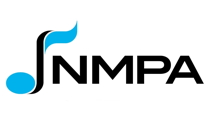
The US’s National Music Publishers’ Association has launched legal action against Wolfgang’s Vault, over the licensing (or lack thereof) of the thousands of hours of concert footage in its archive.
Launched in 2003, Wolfgang’s Vault began life as an archive of concert recordings previously owned by promoter Bill Graham, though it now draws on a number of sources for its content.
As it has expanded its collection, the channels through which it disseminates the live recordings, and the ways it monetises its content, the company has proven controversial. Though, while there have been legal challenges in the past, prior to the company launching a download service in 2009 and a YouTube channel last year, no claims have to date reached court.
The NMPA has become increasingly litigious in recent years, in particular targeting unlicensed lyric websites, while last year it proclaimed that current US copyright laws are holding the publishing industry back from achieving its full financial potential.
Yesterday, it filed its copyright infringement lawsuit against Wolfgang’s Vault at the US District Court for the Southern District of New York, noting that the company “disseminates concert videos and audio recordings through multiple websites including ConcertVault.com, Daytrotter.com and MusicVault.com, as well as YouTube”.
“The infringing websites offer tens of thousands of hours of concert footage as on-demand streams, digital downloads, CDs, DVDs and vinyl recordings which generate revenue for Wolfgang’s Vault through subscriptions and advertising”, a statement continues. “They attract approximately 50,000 visitors per day – and all without properly paying the songwriters and music publishers whose creative content underlies the collection”.
Expanding on the dispute, NMPA president David Israelite told reporters: “The Wolfgang’s Vault websites have profited in large part because of the significant use of unlicensed music, primarily concert footage, available on their sites. Systematic copyright infringement cannot be a business model, and it is unfortunate that Wolfgang’s Vault chose not to compensate all of the creators responsible for their content. Hopefully, this lawsuit will bring publishers and many iconic songwriters the revenue they deserve for the use of their music”.
In the past, the NMPA has reached out of court settlements with other video-on-demand services making use of its member’s songs, most notably multi-channel networks Fullscreen and the now Disney-owner Maker Studios. Presumably that’s the sort of outcome the organisation is hoping for here too, rather than having to go through a tedious court battle.
READ MORE ABOUT: National Music Publishers' Association (NMPA) | Wolfgang's Vault
Thursday 28 May 2015, 09:57 | By Chris Cooke
Pre-1972 case given class action status
Business News Digital Legal

The Pre-1972 Thing, as I’d like all lawyers to now call it, continues to roll forward in the US, with a judge giving Flo & Eddie’s legal battle with Sirius XM in California class action status, meaning that any ruling in the musicians’ favour can be extended to anyone else owning sound recordings that pre-date 1972 which have been played by the satellite radio service. Which could make the damages payout massive.
As previously reported, under US-wide federal law, there is no general ‘performing right’ for sound recordings, meaning AM and FM radio stations do not need to get licenses from or pay royalties to the record labels. However, federal law does oblige satellite and online radio services to secure such a license, though they can do so via the SoundExchange collective licensing system.
But federal copyright law only directly protects sound recordings made since 1972; any recordings released before that year are protected by state law. So Sirius decided that its specific obligations under federal law to pay royalties to labels couldn’t apply to recordings that pre-date 1972.
Some artists and labels then started to argue that the obligation to pay royalties also existed under older state copyright laws as well. Even though those laws make no specific distinction between traditional radio and satellite/online radio, so if Sirius was obliged to pay royalties, so would AM and FM oldie stations, none of which had ever paid the labels any money for the pre-1972 music they play.
Because of that anomaly, Sirius (and Pandora, which has also been sued on this matter) was confident of a court win. But then the Californian courts sided with the music industry, and a New York court indicated it would do likewise. The latter specifically noting that just because the labels had never enforced this apparent state level performing right against AM/FM radio stations, didn’t mean they couldn’t now enforce it against Sirius.
So that’s all fun. While the labels and SoundExchange have gone legal on this issue too, the highest profile cases have been led by Flo & Eddie, who as members of 1960s group The Turtles have a vested interest in all this. And having won the Californian case last September, the duo pushed for their case to be given class status, meaning any other labels and musicians with pre-1972 recordings would be due royalties from Sirius. And yesterday the judge overseeing the Californian proceedings granted that request.
Sirius, which is appealing most of the rulings against it on this issue, argued against the Flo & Eddie litigation having class action status on procedural grounds, but the judge wasn’t having any of it.
Lobbying is underway, of course, for statutory clarification on this matter, most likely by extending federal copyright protection to all sound recordings still within their copyright term, while the labels would like a wider general performing right added to federal copyright rules as well. Though all that could take quite some time to go through the motions, and meanwhile the slightly confusing legal wranglings at a state level will continue. And Sirius might have to write some big cheques along the way.
READ MORE ABOUT: Flo & Eddie | SiriusXM
Thursday 28 May 2015, 09:56 | By Chris Cooke
Merlin announces deal with pan-Asian streaming service KKBOX
Business News Deals Digital Labels & Publishers

Indie label repping digital rights agency Merlin has announced a deal with Asian streaming service KKBOX, the Taiwan-based digital set-up that was one of the first players in streaming music (launching in its home territory before Pandora’s launch in the US) and which is now live in six other territories, including Hong Kong, Macau, Singapore, Malaysia, Thailand and the digitally-nervous market of Japan. The arrangement is Merlin’s first ever pan-Asian specific deal.
Confirming the tie-up, Merlin CEO Charles Caldas told reporters: “Merlin is a truly global organisation, and we are delighted to be breaking new ground via our partnership with KKBOX. This deal will enable Merlin members around the world to capitalise on the huge appetite for independent music across South East Asia”.
Meanwhile Josephine Cheng, Senior Vice President of KKBOX, added: “We are very excited to partner with Merlin. By bringing some of the world’s best independent labels to KKBOX this deal will hugely enrich our members’ music experiences. We continue to be committed to empower independent labels and artists to distribute and promote their music through our platform”.
READ MORE ABOUT: KKBOX | Merlin
Thursday 28 May 2015, 09:55 | By Chris Cooke
EMI to return to India via joint venture with Bollywood director
Business News Deals Labels & Publishers

Universal Music has announced the return of the EMI brand to the Indian market with the launch of EMI Records India, a joint venture with leading Bollywood film director Mohit Suri. Universal says the alliance is “the first ever association between a major record label and an eminent Bollywood film director that will develop a new platform that cuts across film and non-film musical genres”.
One of the challenges for the majors as emerging markets play an ever important role in the wider recorded music industry – and as the big streaming firms pump more of their investment into launching and expanding in these markets – is that the Western music giants don’t necessarily have the same market dominance in these territories as they do in Europe and North America. India is a key emerging market, and Bollywood is incredibly dominant there. All of which makes Universal’s alliance with Suri rather interesting.
Confirming the launch of all new EMI in India, the CEO of Universal Music Group South Asia, Devraj Sanyal, told reporters: “We’re immensely proud of our new partnership with Mohit Suri to bring EMI Records back to India. Mohit has been responsible for some of the biggest Bollywood hits of all time and A&R is right at the heart of Universal Music so this collaboration is the perfect platform for blending our complementary strengths and our shared love of music”.
He went on: “Too often in India there has been a huge gulf between film and non-film music but now with EMI Records India we are creating a new label to bridge that divide and invest in artists across all areas of their careers from mainstream Bollywood cinema through to Universal Music India’s rapidly growing live, branded content, endorsements and merchandising businesses”.
Meanwhile Suri added: “Music and independent artists have been the backbone of my career ever since I started ten years back. I strongly believe that the music composers, lyricists and singers that I have worked with from all over the world have been the stars of my life. This collaboration with Devraj and his team at Universal Music is the most organic synergy of like-minded people that allows me to continue exploring my love for music on a larger scale”.
Continuing: “With our joint expertise we will make EMI Records India a dependable brand through which we will launch and nurture musical talent and simply ‘let the music play’. Culturally, music has always played an integral role in our lives … [and] particularly through … Bollywood. Now, armed with expertise in both businesses – music and film – EMI Records India will soon carve out its own space in the world of music and entertainment”.
READ MORE ABOUT: EMI | Mohit Suri | Universal Music
Thursday 28 May 2015, 09:54 | By Chris Cooke
Theatre industry publishes new technical standards after Apollo ceiling collapse
Business News Legal Live Business

Although led by the theatre industry, new technical standards produced after the collapse of the ceiling at London’s Apollo Theatre in 2013 (the theatre venue on Shaftesbury Avenue, not the music venue in Hammersmith) will likely have an impact on the wider live industry, and anyone operating conventional theatre-style venues.
Various organisations, including the Society Of London Theatre, UK Theatre and the Association Of British Theatre Technicians, collaborated on reviewing health and safety procedures after the Apollo incident, and have now issued revised technical standards and specific new guidance on the monitoring of ‘suspended fibrous plaster ceilings’.
A memo from the ABTT notes that: “Although ceiling inspections are nothing new for theatres, the guidance identifies a baseline survey which, while remaining proportionate, is more comprehensive and thoroughly documented than previously required”.
It goes on: “The Health & Safety Executive have said they believe that by 31 August 2016, all theatres that have, or potentially have, suspended fibrous plaster ceilings should have completed their baseline survey, have had their ceiling competently inspected and put in place measures to ensure the ceiling is safe. Any concerns theatre owners have regarding this work should be addressed in the first instance to their local authority”.
More information about the new procedures have been posted online here.
READ MORE ABOUT: Association Of British Theatre Technicians | Society Of London Theatre | UK Theatre
Thursday 28 May 2015, 09:53 | By Andy Malt
U2 tour manager Dennis Sheehan dies
Business News Industry People

U2’s tour manager Dennis Sheehan was found dead in his Los Angeles hotel room yesterday morning, following the first night of the band’s five night residency at the Forum venue in the city. He is reported to have died from a heart attack. He was 68.
Sheehan had worked with U2 throughout their career. In a statement, Bono said: “We’ve lost a family member, we’re still taking it in. He wasn’t just a legend in the music business, he was a legend in our band. He is irreplaceable”.
Meanwhile Arthur Fogel, CEO of Global Touring at the band’s promoter Live Nation, said: “With profound sadness we confirm that Dennis Sheehan, U2’s longstanding tour manager and dear friend to us all, has passed away overnight. Our heartfelt sympathy is with his wonderful family”.
Sheehan worked with various artists over his career including Led Zeppelin, Lou Reed and Iggy Pop, becoming U2’s tour manager in 1982.
READ MORE ABOUT: Dennis Sheehan | U2
Thursday 28 May 2015, 09:52 | By Andy Malt
Blink 182 split is like a fun divorce
Artist News

All of you who thought that Tom DeLonge’s split from Blink 182 earlier this year was an acrimonious one, get with the fucking programme idiots. They’re totally cool. It’s like a cool divorce where everyone stays friends and they don’t even mind about breaking up. It’s probably better. They’re much better friends now. Honestly, it’s cool. So cool.
Speaking to the Das Process podcast, via NME, the band’s Mark Hoppus said: “We are right now going through what so far has been a friendly divorce with our former guitarist. Hopefully things clear up and it doesn’t get all managery and lawyery and all that and we can move forward”.
“Tom was my best friend for years and years and the thing is if you think about the people that you were friends with at the end of high school and the beginning of college”, he added. “How many of those people are you still friends with? We’ve been in the same van and bus and aeroplane and backstage room and stage for 20 something years”.
Yeah, how many people are you still friends with after that long? Huh? I bet it’s none. Or at least less than five. OK, ten at a push. But have you had to tour with them? No, you haven’t. Or maybe you have. Whatever. Here’s the interview in audio form.
READ MORE ABOUT: Blink 182 | Mark Hoppus | Tom Delonge
Thursday 28 May 2015, 09:51 | By Andy Malt
Jack White would like you to shut up
Artist News Media

A representative of Third Man Records – who is definitely just someone who works there and wants to remain anonymous and isn’t Jack White – has posted to Facebook a lengthy, well-studied, and pretty angry list of the ways in which White’s recent interviews have been taken out of context by the pesky media.
Following on from the rebuttal of a student newspaper’s article on White’s tour rider earlier this year, here are the key points from the new post:
• Jack White does not feel that he has no place on Planet Earth, so shut up.
• Jack White is taking a break from touring, but not giving it up forever, so shut up.
• No, he doesn’t like festivals, but he still does them, so shut up.
• Actually he really liked Bonnaroo this year, so shut up.
• He’s not quitting music altogether, he’s doing something with The Dead Weather next week actually, so shut up.
• No, Meg White doesn’t answer the phone, but she doesn’t have to answer the phone, so shut up.
• The White Stripes are over forever, which both Jack and Meg are fine with, so shut up.
• The White Stripes are still selling records anyway, so shut up.
• Jack White does whatever he can to help struggling artists, which includes but is not limited to being involved with Tidal, so shut up.
• Jack White is not just out for as much money as he can get, he just did a tour where he charged $3 for tickets and he runs a record label that is frankly making no one rich, so shut up.
• Shut up.
He also conceded that journalists are just doing a job, but adds that that job has basically become an awful cycle of shortening things and taking them out of context for maximum impact. Thankfully there is no evidence of that here.
READ MORE ABOUT: Jack White | Third Man Records
Thursday 28 May 2015, 09:50 | By Chris Cooke
CMU’s One Liners: Apple regains position as most valuable brand, Capitol US appoints new COO, tech IPO plans, and more
Artist News Brands & Merch Business News Digital Gigs & Festivals Industry People Labels & Publishers Media One Liners Releases

Other notable announcements and developments today…
• Apple has regained the title of most valuable brand in the world from Google, according to the BrandZ global brand power list, which is a thing. But don’t worry Google, our analysis confirms you are still the bigger cunt. And if you think that’s offensive, someone said “acqui-hired viral quotient” in CMU HQ yesterday, for which we can only apologise.
• Universal Music announced earlier this week that Michelle Jubelirer has been promoted to the role of Chief Operating Officer at its Capitol Music Group division in the US where she will “focus on the company’s business strategy and development” and liaise with UMG big cheeses. And who wouldn’t want to do that? Me.
• Norman Abdul Halim, Executive President of leading Malaysian independent record company KRU Music and one third of the pop group the label is named after, KRU, has joined the main board and Asia regional board of the International Federation Of The Phonographic Industry.
• Assuring that – if and when it decides to float – Spotify will join a party of other big tech IPOs, both Buzzfeed and Snapchat have confirmed they have plans to go the IPO route. I put together a hilarious listicle about this, but I posted it to Snapchat and you all you missed it.
• Tyler, The Creator has said that Odd Future are “no more”.
• Azealia Banks is going to star in a film directed by RZA about an aspiring rapper in New York torn between following her dream and finishing school, according to Deadline.
• Amy Winehouse documentary ‘Amy’ will receive its UK premiere at the Edinburgh Film Festival next month.
• Django Django have released the video for new single ‘Shake And Tremble’. Here it is.
• 4AD is re-issuing Cocteau Twins albums ‘Tiny Dynamine’ and ‘Echoes In A Shallow Bay
The Pink Opaque’ on 17 Jul.
• Mikal Cronin has premiered the video for his new single, ‘Say’, on Funny Or Die. It’s a parody of Paul Simon’s ‘You Can Call Me Al’.
• Julian Casablancas And The Voidz have released a thirteen minute video for their eleven minute song ‘Human Sadness’. Have a look.
• Lindstrøm has remixed ‘Painted’ by MS MR. Cool.
• Vessels will play Oslo in Hackney on 17 Jun.
• OOFJ are going to play two London shows next month, at the Shacklewell Arms on 3 Jun and then The Waiting Room on 6 Jun.
READ MORE ABOUT: 4AD | Amy Winehouse | Apple | Azealia Banks | Buzzfeed | Capitol | Cocteau Twins | Django Django | International Federation Of The Phonographic Industry (IFPI) | Julian Casablancas | KRU Music | Michelle Jubelirer | Mikal Cronin | Norman Abdul Halim | Odd Future | OOFJ | RZA | Snapchat | Tyler The Creator | Universal Music | Vessels
Thursday 28 May 2015, 09:49 | By Andy Malt
Young Thug threatens to use Lil Wayne’s delayed album title
And Finally Artist News Releases
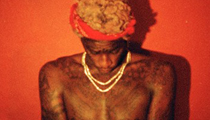
Rapper Young Thug got into trouble with Lil Wayne earlier this year when he announced that he planned to call a new mixtape he’d made ‘Carter 6’. When it was released in April, the name had been altered to ‘Barter 6’. But now Thug is saying that he has his sights set on a more contentious name for his next mixtape.
Speaking to No Days Off Radio , Young Thug said: “I’ma drop one more mixtape before my album … I’ll probably name it ‘Tha Carter V’ cos the original ‘Carter V’ still ain’t came out yet. I don’t know what the fuck they doing, slowcoaching. So I’ma put that muthafucker out for em”.
Originally announced in August last year for an October release, Lil Wayne’s ‘Tha Carter V’ album has seen its launch date moved back several times. Now it is being delayed indefinitely by a lawsuit filed by the rapper against his label Cash Money in January over an allegedly unpaid advance. Last month the lawsuit was moved from New York to New Orleans, where Lil Wayne originally signed his deal with the label in 1998.
You can watch Young Thug’s full interview with No Days Off Radio here:
READ MORE ABOUT: Lil Wayne | Young Thug





